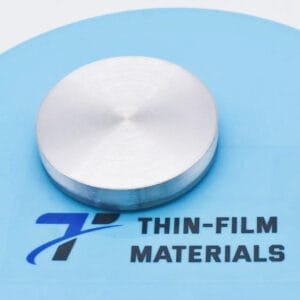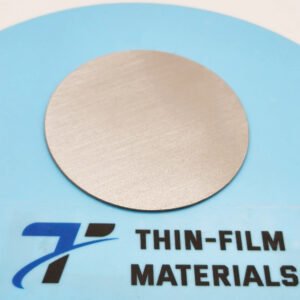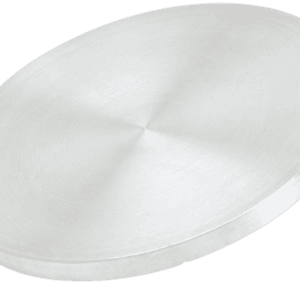Copper(I) Oxide (Cu₂O) Sputtering Target
Introduction
Copper(I) Oxide (Cu₂O) Sputtering Targets are advanced ceramic materials widely used in thin film deposition for semiconductors, optoelectronics, and energy devices. With its direct bandgap (~2.0 eV) and p-type semiconducting properties, Cu₂O is a highly attractive material for transparent conductive films, photovoltaic absorbers, and oxide electronics. Its ability to form stable and uniform thin films makes it a preferred choice for both research and industrial applications.
Detailed Description
Copper(I) Oxide sputtering targets are manufactured using high-purity copper oxide powders (≥99.9%) through hot pressing or sintering, resulting in dense, uniform targets with excellent mechanical stability.
Key features include:
High Purity – ensures reliable thin film quality with minimal contamination.
Direct Bandgap (2.0 eV) – ideal for optoelectronic and photovoltaic applications.
Stable Ceramic Microstructure – supports consistent sputtering rates and uniform thin film growth.
Custom Configurations – available in circular, rectangular, and planar target forms.
Bonding Options – indium or elastomer bonding to copper backing plates available for high-power sputtering.
Cu₂O thin films deposited from these targets can serve as active semiconductor layers, transparent conducting oxides, or catalytic surfaces depending on processing conditions.
Applications
Copper(I) Oxide sputtering targets are commonly used in:
Photovoltaics – absorber layers for solar cells and tandem devices.
Transparent Conductive Films – p-type TCO films for displays and optoelectronics.
Gas Sensors – thin film gas-sensing elements.
Catalysis – thin films for photocatalytic and electrocatalytic reactions.
Research in Oxide Electronics – studies on novel p-type oxide semiconductors.
Technical Parameters
| Parameter | Typical Value / Range | Importance |
|---|---|---|
| Purity | 99.9% – 99.99% | Ensures high-quality thin films |
| Composition | Cu₂O (Copper(I) Oxide) | P-type semiconductor |
| Diameter | 25 – 200 mm (customizable) | Compatible with sputtering systems |
| Thickness | 3 – 10 mm | Influences deposition rate |
| Bonding | Indium / Elastomer / Copper backing | Improves heat transfer |
Comparison with Related Materials
| Material | Key Advantage | Typical Application |
|---|---|---|
| Copper(I) Oxide (Cu₂O) | P-type semiconductor, bandgap ~2 eV | Photovoltaics, TCO films |
| Copper(II) Oxide (CuO) | Narrower bandgap (~1.2 eV) | Gas sensors, catalysts |
| Indium Tin Oxide (ITO) | High transparency, conductivity | Displays, touch panels |
FAQ
| Question | Answer |
|---|---|
| What purity levels are available? | Standard purities are 99.9% (3N) and 99.99% (4N). |
| Can the targets be bonded to backing plates? | Yes, indium or elastomer bonding to copper plates is available. |
| Which industries benefit most from Cu₂O films? | Photovoltaics, displays, gas sensors, and R&D in oxide electronics. |
| How are the targets packaged? | Each target is vacuum-sealed, cushioned with foam, and shipped in export-safe cartons or wooden crates. |
| Are custom shapes available? | Yes, circular, rectangular, and planar forms can be supplied. |
Packaging
Copper(I) Oxide sputtering targets are individually vacuum-packed with moisture-proof protection. Each package is labeled for traceability and secured in foam-lined export cartons or wooden crates to ensure safe delivery.
Conclusion
Copper(I) Oxide (Cu₂O) Sputtering Targets are a reliable choice for producing p-type semiconducting films in solar cells, transparent electronics, and oxide-based devices. With high purity, stable ceramic structure, and customizable configurations, they provide consistent performance for both R&D and industrial thin film deposition.
For detailed specifications and a quotation, please contact us at [sales@thinfilmmaterials.com].
Related Products: Copper Sputtering Target, Copper (II) Selenide Sputtering Target, Copper Indium Sputtering Target





Reviews
There are no reviews yet.